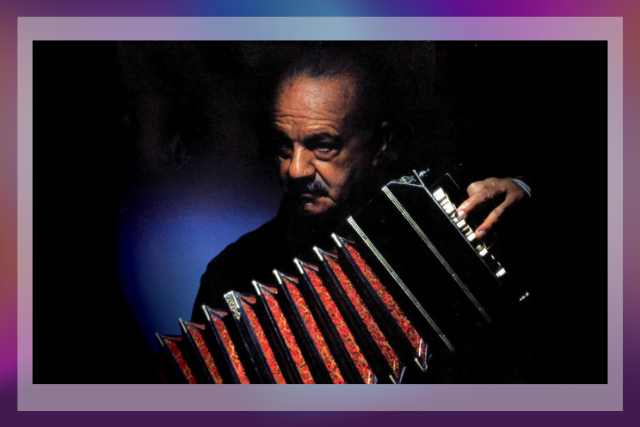100 Years of Astor Piazzolla The Soul of New Tango Presented by Koubek Center

100 Years of Astor Piazzolla The Soul of New Tango Presented by Koubek Center
An extraordinary musician, composer, and bandleader Astor Piazzolla, the creator of New Tango, would have celebrated his 100th birthday this March 11. While listening to his music today, it’s hard to understand how controversial he once was and the violent reactions he inspired. But for his New Tango, Piazzolla looked past tradition, the dancers’ needs, and the postcard clichés of tango, and drew instead from European classical music, jazz, and Klezmer, a distant echo perhaps of his growing up in the Lower East Side in New York City.
His New Tango included soaring melodies, Bachian fugues, urgent Bartok-inspired rhythms, walking basses, and the sound of the electric guitar. It was a blast of fresh air. And just like that, the man so many traditionalists accused of killing tango might have saved it — most notably from itself. His New Tango stirred and re-energized the genre at home and reached a new, global audience. It brought Piazzolla — who, as a student of classical music by day and a tango musician by night, once dreamed of becoming a classical composer — to classical music temples. His admirers and collaborators came to New Tango from unexpected places in the music universe, including classical masters such as Mstislav Rostropovich, Gidon Kremer, and Yo-Yo Ma; jazz luminaries such as Gerry Mulligan, Gil Evans, Al DiMeola, and Gary Burton, and dance music diva Grace Jones.Astor Piazzolla died in July 1992. He was 71. His brand of tango, his New Tango, is now played by symphonic orchestras, chamber groups, and string quartets worldwide.
The Koubek Center is proud to commemorate Astor Piazzolla with images, voices, and some of the New Tangos that helped turn a local, popular dance music into a global art.
FEATURED ARTISTS Pablo Aslan‘s Mash-ish “Balada Para mi Muerte” (1970) Part of the collaboration with Horacio Ferrer that also yielded “Balada Para un Loco” “Libertango” (1974) Recorded in Italy. This piece, one of the most popular in Piazzolla´s repertoire, was turned into a dance hit by pop diva Grace Jones “Oblivion” (1984) Recorded in Italy.
Music for the film Enrico IV by Marco Bellochio Rio de Janeiro, Brazil Luana Mallet, vocals, guitar José Arimatéa, trumpet, flugelhorn, horn arrangements Roberto Rutigliano, drums, percussion arrangements Zero Telles, percussion Buenos Aires, Argentina Eleonora Ferreyra, bandoneon Eva Wolff, bandoneon Ayelén Pais, bandoneon Natsuki Nishihara, bandoneon Vinalhaven, ME Pablo Aslan, electric and acoustic bass, arrangements, music director, producer Miguel Arrabal Bandoneon Remembering Piazzolla David Alsina & Fellows of New World Symphony String Quartet “Adios Nonino” Written in October 1959, after the death of Piazzolla’s father, nicknamed “Nonino”) “L’Amour” (1975)
Music for the film “Lumiere” by Jeanne Moreau David Alsina, bandoneon Ka-Yeon Lee, violin Yanki Karatas, violin Stephanie Block, viola Clare Bradford, cello Daniel Rosenfeld Film Director Clip of Documentary
“The Years of the Shark” Quinteto Astor Piazzolla Fundación Astor Piazzolla “Camorra II” (1989) The second of the three movements of his late masterpiece, the title work of the last studio recording by Piazzolla’s quintet. La Camorra was the last of the so called “American Trilogy” “Biyuya” (1979) The title track of the first album by Piazzolla’s second (and final) quintet Pablo Mainetti, bandoneon Nicolás Guerschberg, piano Serdar Geldymuradov, violin Daniel Falasca, bass Armando de la Vega, guitar Julian Vat, Music Director
